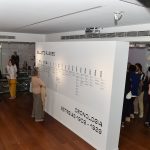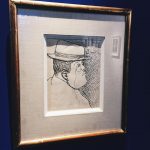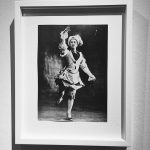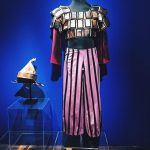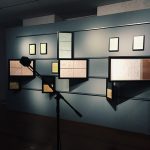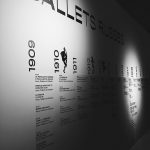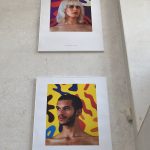2018
Millennium Gallery / National Museum of Theater and Dance / Foz Palace
From 14 July to 29 September
In 1917, when introducing “the extraordinary Modern Art achievements” performed by the Ballets Russes to Portugal Futurista as they began their season in Lisbon in that same year, Almada Negreiros described them as “the biggest victory of modern European civilization”.
Between scandal and admiration, emulation and rejection, Sergei Diaghilev’s Ballets Russes were among the most innovative experiments in early twentieth century artistic creativity. In the creative volcano of the modernist experiments, Diaghilev developed an art programme revolving around dance while drawing upon choreographers, dancers, composers, visual artists, libretto writers and set designers. If modern dance represents the spirit of a certain modernity in a vortex, encapsulated, according to Baudelaire in the “transient, fleeting, contingent” formula, the Ballets Russes showcased total modernity. Devoted to the fusion of the archaic and the avant-garde, they signaled the transitory and the immovable which today articulates modern thought. From the arts of motion to fashion design, from music to sculpture, from set design to painting, from the decorative arts to the cinema, the Ballets Russes constitute a paradigm of the mutually illuminating project that is found in a modernity which still always remains incomplete.
The exhibition “The Ballets Russes: Modern times after Diaghilev” celebrates the centenary of the Lisbon season by problematising the artistic modernity of Sergei Diaghilev’s project and summoning contemporary artists.
The exhibition correspondingly focuses on three core sections:
- celebrating the troupe’s Portuguese saison, at the Museu Nacional do Teatro e Dança, entitled Ballets Russes in Portugal;
- the perennial nature of the incomplete project of the modernities that it encapsulates, expressed in the Ballets Russes’ Modernisms and Modern Times collection exhibited at the Galeria Millenium, and particularly in the original costumes of L’Après-Midi d’un Faune and Le Sacre du Printemps, which go on display for the first time in Portugal;
- and Ballets Russes After Hours that revolves around the commissions made to two Portuguese artists, whose proposals continue the incomplete dialogue of modernity in our time, showcasing works that derive from a visual arts project at Galeria Millenium and a choreography/performance at Palácio Foz.
Exhibition Data Sheet:
Os Ballets Russes: Modernidade após Diaghilev | The Modern times after Diaghilev
Organization: The Lisbon Consortium e Centro de Estudos de Comunicação e Cultura (CECC) – Faculdade de Ciências Humanas da Universidade Católica Portuguesa | Museu Nacional do Teatro e da Dança
General Commissioner: Isabel Capeloa Gil
Curatorship: Isabel Capeloa Gil e Paulo Campos Pinto | José Carlos Alvarez | Nuno Crespo
Curatorial Assistants: Alunos do Lisbon Consortium | Students of The Lisbon Consortium Academic Program: Jorge Rodrigues | Juliana Orrego | Mary Wong | Robert Ippolito
Research Support MNTD: Ana Sofia Patrão
Executive Producer: Creative Industries Programmes by SC – Sara Cavaco
Design: Barbara Says
Vídeo Editing: Beatriz Tomás | António Chenoll Mora
MNTD Images Editing: Paulo Baptista
Loan Organizations: Dansemuseet | Maison de la Danse, Lyon | Meissen Porcelain Museum | Museu Nacional de Arte Contemporânea do Chiado | Museu Nacional do Teatro e da Dança
International Transport: Feirexpo | Iterartis
Insurance: Lusitânia Seguros
Venues & Datas | Date:
Museu Nacional do Teatro e da Dança – 26.07 – 29.09
Galeria Millennium – 14.07 – 29.09
Palácio Foz – 17H30-18H45 | 5.30pm – 6.45pm | 13.07 & 16H-17H15 | 4pm – 5.15pm |14.07 – Setembro| September – To be announced
Sponsorship: Fundação Millennium BCP
Production Support: ASUS | Hotel 3K Europa | Internacional Design Hotel | Lusitânia Seguros
Communication Support: Câmara Municipal de Lisboa
Agradecimentos: Presidência de Conselho de Ministros – Cedência Palácio Foz | Pedro Bruno Lima
